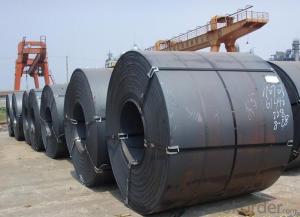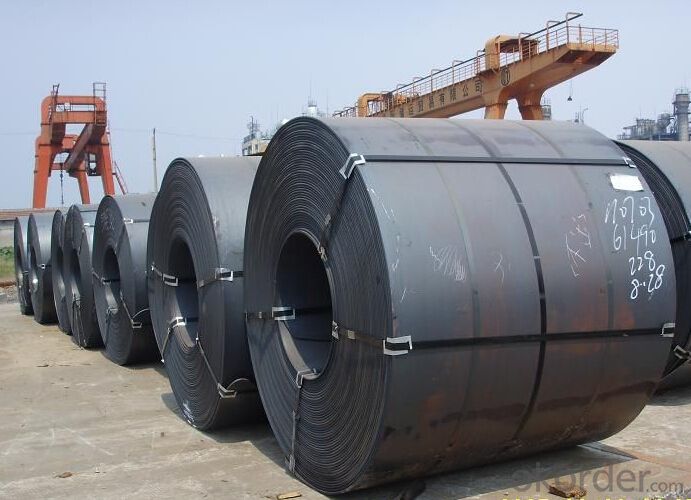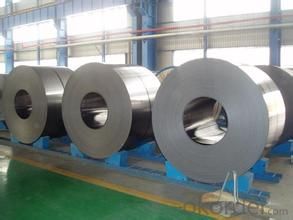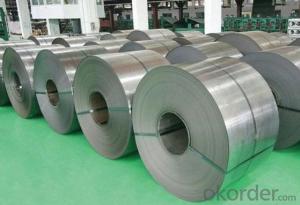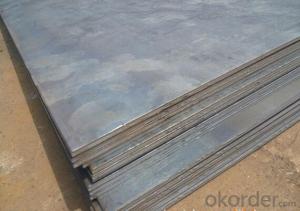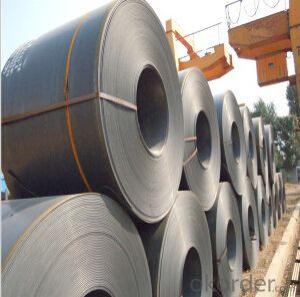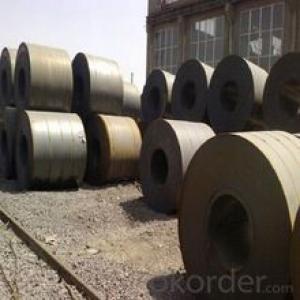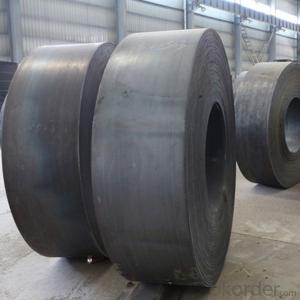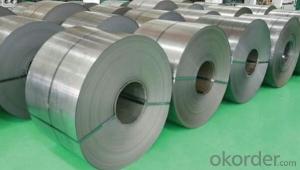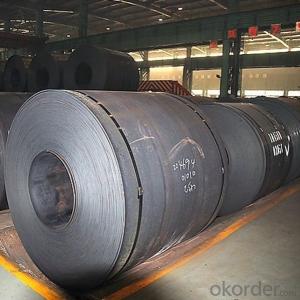HR Steel Coil SS400
- Loading Port:
- China Main Port
- Payment Terms:
- TT or LC
- Min Order Qty:
- -
- Supply Capability:
- -
OKorder Service Pledge
OKorder Financial Service
You Might Also Like
Quick Details
| Standard: | ASTM,GB,JIS | Grade: | ASTM A36,Q235,SS400 | Thickness: | 3-15mm |
| Place of Origin: | Shanxi/Hebei China (Mainland) | Model Number: | carbon steel coil | ||
| Type: | Steel Coil | Technique: | Hot Rolled | Surface Treatment: | passivation,oiled, |
| Application: | normally | Special Use: | High-strength Steel Plate | Width: | 1250-2000mm |
| Length: | as required |
Packaging & Delivery
| Packaging Detail: | Standard waterproof packing |
| Delivery Detail: | Within 15-30 days after receiving your L/C |
Specifications
1.Standard:GB,ASTM,JIS
2.Grade:ASTM A36,Q235,SS400
3.Thickness:3-15mm
4.Width:1250-2000mm
5.Packaging: Standard waterpoof packing or as required.
6.Payment Terms: L/C or T/T
7.Delivery: by shipment
FAQ of Steel Coil:
①How is the quality of your products?
Our products are manufactured strictly according to national and internaional standard, and we take a test
on every coil before delivered out. If you want see our quality certifications and all kinds of testing report, please just ask us for it.
Guaranteed: If products’ quality don’t accord to discription as we give or the promise before you place order, we promise 100% refund.
②How about price?
Yes, we are factory and be able to give you lowest price below market one, and we have a policy that “ for saving time and absolutely honest business attitude, we quote as lowest as possible for any customer, and discount can be given according to quantity”,if you like bargain and factory price is not low enough as you think, just don’t waste your time.Please trust the quotation we would give you, it is professional one.
③Why should you chose us?
Chose happens because of quality, then price, We can give you both.Additionally, we can also offer professional products inquiry, products knowledge train(for agents), smooth goods delivery, exellent customer solution proposals.Our service formula: good quality+good price+good service=customer’s trust
SGS test is available, customer inspection before shipping is welcome, third party inspection is no problem.
Steel Coil Images:
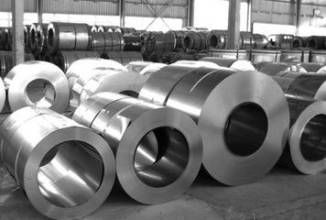
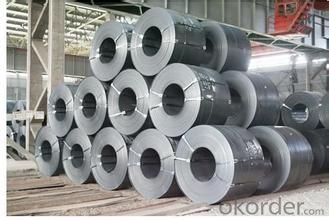
- Q: Can you reload spent casings if they are steel?
- Let me break it down for you. 1) There are two kinds of priming in current use these days -- you cannot tell from the outside which primer it is...only by looking inside the casing. If the casing has a single center primer hole, it is Boxer primed. If the casing has multiple primer holes, none of which is center, it is Berdan primed. Berdan and Boxer are the names of men who designed the priming systems.
- Q: How are steel coils used in the production of steel fasteners?
- Steel coils are used in the production of steel fasteners by being uncoiled and then shaped into various forms such as screws, nuts, bolts, and washers. The coils provide a continuous and efficient supply of high-quality steel material, ensuring consistent and reliable production of fasteners.
- Q: How are steel coils used in the manufacturing of metalworking tools?
- Steel coils are a crucial component in the manufacturing of metalworking tools. These coils, which are typically made from high-quality steel, are used in various stages of the production process to create different types of metalworking tools. One of the primary uses of steel coils in the manufacturing of metalworking tools is for the production of blades and cutting tools. The coils are typically cut into specific lengths and then shaped and sharpened to create the blades that are used for cutting, shaping, and milling various metals. The high-quality steel used in these coils ensures that the resulting blades are durable, strong, and capable of withstanding the demanding conditions of metalworking processes. Steel coils are also used in the manufacturing of drill bits and other types of metalworking tooling. The coils are shaped and machined to create the desired size and shape of the tool, and then hardened and tempered to increase their strength and durability. This ensures that the resulting tools can withstand the high-speed drilling and cutting operations involved in metalworking. Furthermore, steel coils are used to create the bodies and handles of metalworking tools. The coils are typically formed into the desired shape and size using various forming techniques such as bending, rolling, and stamping. These formed pieces are then welded or fastened together to create the final structure of the tool. The high-quality steel used in the coils ensures that the resulting tool bodies and handles are strong, rigid, and capable of withstanding the forces and vibrations associated with metalworking operations. In summary, steel coils play a vital role in the manufacturing of metalworking tools. They are used to create blades, drill bits, bodies, and handles, providing the necessary strength, durability, and precision that are required in metalworking processes. These coils are an essential raw material that enables the production of high-quality, reliable, and efficient metalworking tools.
- Q: What are the common handling defects in steel coils?
- There are several common handling defects that can occur in steel coils during transportation and storage. These defects can impact the quality and integrity of the coils, leading to potential issues down the line. Some of the most common handling defects in steel coils include: 1. Edge damage: This occurs when the edges of the coil are bumped or scraped, resulting in dents, scratches, or even tears. Edge damage can weaken the structural integrity of the coil and make it more susceptible to further damage. 2. Core damage: The core of a steel coil is crucial for maintaining its shape and stability. However, mishandling can cause the core to become crushed or deformed, which can lead to coil collapse or distortion. 3. Coil slippage: When coils are not securely strapped or stacked, they can shift or slide during transportation. This can result in coil slippage, leading to misalignment, damage to the outer layers, or even complete coil failure. 4. Abrasion: Steel coils can be subject to abrasion if they come into contact with rough surfaces or other objects during handling. This can cause the protective coating or paint on the coil to wear off, exposing the steel to potential corrosion. 5. Moisture damage: Steel coils are susceptible to moisture damage, especially if they are not properly sealed or protected. Exposure to moisture can lead to rust formation, which can compromise the structural integrity of the coil and affect its overall quality. 6. Overloading: Overloading a truck or storage area with steel coils can cause excessive pressure and stress on the coils, leading to deformation, bending, or even coil collapse. It is crucial to adhere to weight limits and proper stacking procedures to prevent overloading. 7. Improper lifting: When lifting steel coils, it is important to use appropriate lifting equipment and techniques. Failure to do so can result in coil damage, such as distortion or bending, as well as potential injuries to workers. To mitigate these handling defects, it is crucial to follow proper handling and storage procedures for steel coils. This includes using suitable lifting equipment, securing the coils during transportation, avoiding overloading, and ensuring proper protection against moisture and abrasion. Regular inspections and maintenance can also help identify and address any potential defects or issues before they worsen.
- Q: I was wondering because i just watched an episode of build it bigger on the discovery channel about the uss George bush, and when they were discribing it they said it was 500 tons of steel and 47,000 tons of aluminum. this kinda struck me as odd because i thought that it was mostly made of steel. and i would think that even if it was mostly aluminum, that the hull would be steel. and i think the hull would weigh more than 500 tons.
- An aircraft carrier is a pretty large hunk of metal. And it's mostly steel... at least its structure and weight bearing surfaces. As I recall, there was quite a bit of aluminum and other light stuff used for cosmetic stuff, like covering on interior bulkheads (walls). But the flight deck is about three football fields of steel... thick steel. Planes landing on an aircraft carrier don't land. They are trapped when their tail hook grabs an arresting cable, and kind of fall out of the sky. When they hit, they need something pretty substantial to break the fall. A carrier displaces an awful lot of water, but, and this is a guess, probably less than 100,000 tons... the one I was on displaced less than 80,000 tons. About 40 feet of it is underwater. Most of its crew live below or very close to the waterline. But there's enough above water to allow for the city that the carrier contains to operate pretty much like any city with a population of about 6,000. It has stores where you can buy almost anything, barbers, a hospital, dentists, doctors, fitness center, theaters, fast food places where you can have a hamburger made to order, restaurants where the food is free, a post office, gas stations, a radio studio and a television studio, newspaper, churches--a chapel as well as other places people can meet to hold religious services, even an airport. I looked at the ship's website. From what little information there is, it looks to be just a few feet larger than the old carrier I was on. If it weighs 500 tons, it has to displace 500 tons. Don't ask me how they do it... unless it was materials used during construction and removed.
- Q: How are steel coils inspected for defects after recoiling?
- Steel coils are inspected for defects after recoiling through a thorough visual examination, which involves inspecting the surface for any visible defects such as scratches, dents, or cracks. Additionally, non-destructive testing techniques like ultrasonic or magnetic particle inspection may be used to identify any internal defects that are not visible to the naked eye.
- Q: How are steel coils used in the production of kitchenware?
- Steel coils are used in the production of kitchenware by being shaped and formed into various utensils and appliances such as pots, pans, knives, and cutlery. The coils are typically cut, stamped, and pressed into the desired shape, then undergo further processes like polishing, coating, and finishing before being assembled into the final kitchenware products.
- Q: I need to construct a table with three columns, which states the name of the steel, its compositions (e.g. Fe and C), and its special properties for a variety of different steel products.Help me please, a site with info would be great, explanations would be even better.
- Steel is an alloy consisting mostly of iron, with a carbon content between 0.2% and 2.1% by weight, depending on the grade. Carbon is the most common alloying material for iron, but various other alloying elements are used, such as manganese, chromium, vanadium, and tungsten.[1] Carbon and other elements act as a hardening agent, preventing dislocations in the iron atom crystal lattice from sliding past one another. Varying the amount of alloying elements and form of their presence in the steel (solute elements, precipitated phase) controls qualities such as the hardness, ductility, and tensile strength of the resulting steel. Steel with increased carbon content can be made harder and stronger than iron, but is also less ductile. H.
- Q: What are the different types of steel coil edge conditions?
- There are several different types of steel coil edge conditions, each designed to meet specific requirements and applications. The most common types include: 1. Mill Edge: Mill edge is the default edge condition for hot-rolled steel coils, where the edges are left as they come out of the rolling process. This edge condition is characterized by a slightly rough and uneven surface. 2. Slit Edge: Slit edge is created by cutting the coil along its width to achieve narrower strips. This edge condition is typically smoother and more uniform than mill edge, making it suitable for applications where a clean and precise edge is required. 3. Trimmed Edge: Trimmed edge is achieved by removing irregularities and imperfections from the edges of the coil. This process results in a straight and smooth edge, making it suitable for applications where a precise and uniform surface is necessary. 4. Deburred Edge: Deburred edge is created by removing burrs or sharp edges from the coil. This edge condition is commonly used in applications where safety is a concern, as it eliminates any potential hazards associated with sharp edges. 5. Round Edge: Round edge is achieved by rounding the corners of the coil. This edge condition is often employed in applications where the material needs to be easily handled or when there is a need to prevent damage to other materials or surfaces. 6. Slit and Deburred Edge: Slit and deburred edge combines the benefits of both slit edge and deburred edge conditions. It involves cutting the coil to achieve narrower strips and then removing any burrs or sharp edges, resulting in a clean and safe edge. Each of these edge conditions serves a specific purpose and is chosen based on the requirements of the application. By understanding the different types of steel coil edge conditions, one can select the most suitable option to ensure optimal performance and safety.
- Q: How are steel coils used in the production of household appliances?
- Steel coils are used in the production of household appliances as they serve as the primary material for manufacturing various components such as the outer body, frame, and internal structures. These coils are formed into different shapes and sizes, allowing for the creation of durable and robust appliances. The steel coils provide strength, stability, and resistance to wear and tear, ensuring the longevity and reliability of the appliances.
Send your message to us
HR Steel Coil SS400
- Loading Port:
- China Main Port
- Payment Terms:
- TT or LC
- Min Order Qty:
- -
- Supply Capability:
- -
OKorder Service Pledge
OKorder Financial Service
Similar products
Hot products
Hot Searches
Related keywords
